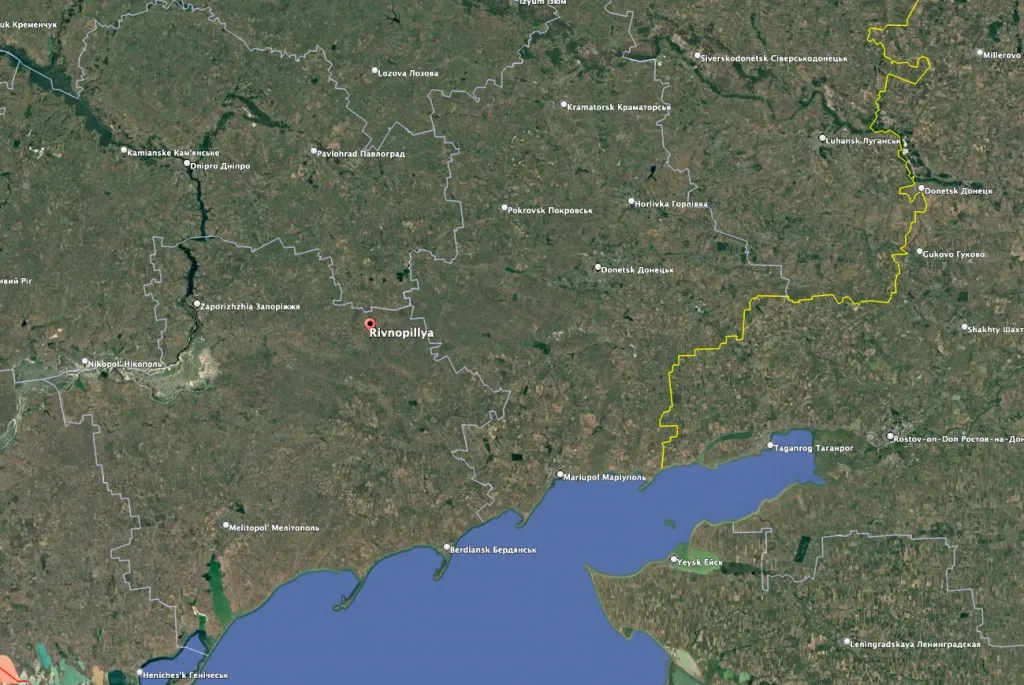As Ukrainian forces struggle to hold onto the embattled eastern city of Pokrovsk, they are facing increasing pressure about 55 miles to the southwest in the Zaporizhzhia region. The Ukrainian Southern Command on Wednesday said its forces pulled out of the small hamlet of Rivnopillia, the latest in a string of withdrawals in the area since Tuesday. The retreat puts Russian troops a little more than 50 miles east of Zaporizhia, one of Ukraine’s biggest cities with a population of more than 700,000.
The two fronts, in adjacent regions, are related, given Russia’s overwhelming advantage in troop strength and Ukraine’s more limited ability to generate forces to defend both areas. As a result, there are serious questions about how much longer Ukraine can hold onto Pokrovsk and the strategic impact of its potential fall. So we reached out to one battlefield commander with troops in Pokrovsk who offered us some insights about the front-line situation. He spoke to us on the condition of anonymity to talk about operational details.

“If Russia manages to advance deeper into Pokrovsk, it would be one of the most serious challenges for Ukraine in recent months,” the commander explained. “Pokrovsk is not just another city. It’s a logistical and strategic hub that connects multiple directions across the Donetsk front. Losing it would mean breaking one of the last strong defense lines before Kramatorsk and Slovyansk, the industrial heart of this part of Ukraine.”

Losing Pokrovsk would also have a cascading effect on the Zaporizhia front and elsewhere.
“For the enemy, Pokrovsk is a gate,” he added. “Once they control it, they can project artillery farther west and threaten supply lines feeding the entire eastern group of Ukrainian forces. For us, it would mean longer supply routes, higher risk for convoys, and pressure on our reserves.”
Meanwhile, “simultaneous pressure on adjacent sectors [like Zaporizhzhia] forces Ukraine to keep reserves thin and limits the ability to plug gaps quickly.”
Russia, which has been trying to capture Pokrovsk for more than a year, is paying a heavy price for its advances, the commander stated.
“Around Pokrovsk, the Russians are taking enormous losses,” he posited. “They’re throwing wave after wave of troops into the fight — mostly poorly trained men, often with no proper coordination or cover. Every assault costs them dozens, sometimes hundreds of lives.”
“You can feel it on the ground,” he continued. “The smell of burned vehicles, the sound of their medevacs running nonstop. It’s not a battlefield anymore; it’s a graveyard for their infantry. They’re losing entire assault groups just to take a few hundred meters, and they have to start over the next day.”
For a long time, Ukraine held an advantage in defending Pokrovsk. The city has high-rises, industrial buildings and underground passageways that made it difficult to attack and allowed Ukrainian troops freedom of movement. However, as more Russian troops pour into the city, they gained the upper hand.
“Russian units are fighting for high-rises and interior city blocks, which increases cost per meter held and reduces freedom of movement for defenders,” the commander noted. “Attacks from multiple axes (especially the west toward Myrnohrad, about a mile to the east), create the risk of semi-encirclement, and strain supply lines. Russia is massing forces and sustainment here — meaning Ukraine’s defense must absorb a high tempo of small assaults.”

Ukrainian logistic lifelines “are under fire from Russian drones and mining, complicating resupply and reinforcement.”
The weather is making matters worse, impeding drone operations and making it harder to pinpoint the location of Russian troops.
“Urban fog, poor visibility, and dense architecture favor attacker surprise and make defensive coordination harder,” the commander noted.
To hold onto Pokrovsk, “Ukraine must deny Russian resupply, prevent consolidation in high-rise anchors, keep constant counter-mobility (mines, obstacles), and rapidly move reserves into threatened zones,” according to the source.
Keeping the city in Ukrainian hands “is extremely challenging,” the source pointed out, “because of high-intensity urban combat within city limits, multi-directional Russian pressure (including attempts to envelop the city from the west), superior Russian troop and ammunition throughput on this sector, disrupted Ukrainian logistics under constant UAV surveillance, and worsening weather/visibility conditions that favor small-group assaults and reduce maneuver space.”
As dire as the waning defense of Pokrovsk is for Ukraine, a Russian takeover there will not necessarily result in easy future advances, the commander claimed.
“Let me be clear,” he proclaimed. “This won’t be an easy victory for them. They are paying for every street with heavy casualties. Our soldiers are fighting block by block, building by building. Even if they take ground, it doesn’t mean they hold it – we bleed them every day. Pokrovsk may become another Bakhmut for them, a victory that costs them too much to be worth it.”
“In short, yes, it’s dangerous strategically,” the commander postulated. “But if they break through, they’ll find not open space, but more resistance waiting for them.”
Contact the author: [email protected]
